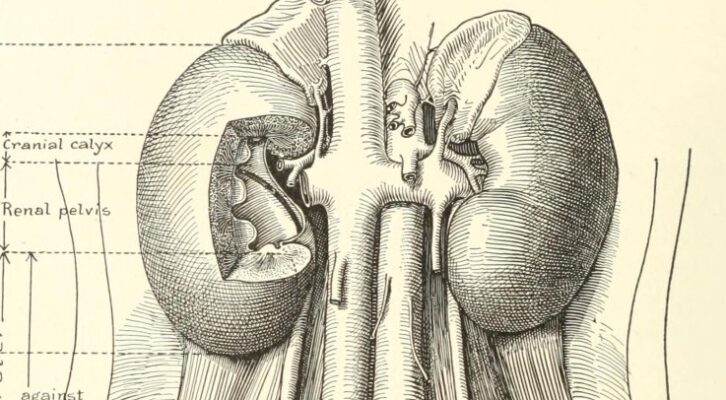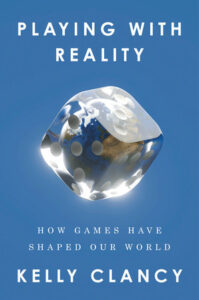
How Game Theory Can Help Organ Donors Find Their Match
Kelly Clancy on the Medical Possibilities of Mathematically-Influenced Altruism
“Ye live not for yourselves; ye cannot live for yourselves; a thousand fibres connect you with your fellow men, and along those fibres, as along sympathetic threads, run your actions as causes, and return to you as effects.”
–Henry Melvill
*Article continues after advertisement
In 1983, the US FDA cleared cyclosporine as an immune suppressant for organ transplant patients. In an instant, medical treatments that were once the purview of science fiction became realizable for hundreds of thousands of critically ill people. The only things missing were the organs themselves. An idea came to Dr. Barry Jacobs while he was watching a news report covering the mass death of thousands of Bangladeshis. He was struck not with the tragedy of their loss but with “the waste of all those organs lying there.” Jacobs’s devotion to capitalism had already outshone his Hippocratic oath: he’d recently been released from prison, having served time for prescription fraud.
He’d lost his license to practice medicine but would repurpose his clinical expertise to become a self-styled organ broker.
With the right incentives—like winning a kidney for a loved one in need— people happily donate to strangers.
Jacobs set up a for-profit market to match organ donors (mainly from developing countries) with wealthy patients needing organs. His company would harvest the organs “from US citizens and Third World indigents,” he told a reporter. “It will be pure, free choice on their part. There will be proper, written informed consent. Since many potential donors can’t read, the informed consent conference will be tape-recorded.” His company would pay for the donor’s flight to a US medical center and take a cut of the final sale price. He planned to exploit Medicare services to cover the cost of the surgery needed to extract the organs. “It’s a very lucrative potential business. If the ‘haves’ want it, they’ll have to pay. If the ‘have-nots’ want it, they’ll have to pay, too.”
An entirely new market had sprung up overnight. It’s not unusual for businesses to move faster than government regulation, but Jacobs’s business model inspired such widespread revulsion that it elicited an uncharacteristically rapid response from Congress. In 1984, Senator Al Gore introduced legislation banning the sale of human organs for money. The bill also established a private nonprofit organization to match patients in need with donated organs. Jacobs faded back into obscurity before making national news again in 2000, when he was found guilty of strangling his wife to death, a crime for which he served fifteen years in prison.
Like the fragmented health-care system it sat within, the early US organ-matching process was decentralized and haphazard. Hospitals had no incentives to share patient and donor databases. Organs from deceased donors went to waste for lack of finding suitable matches in time. Perhaps the greatest tragedy was the number of potential live donors turned away. Relatives and friends of patients needing transplants were often willing to donate but found to be immune incompatible.
Occasionally, happy accidents would link a pair of donors—as happened with Tia Wimbush and Susan Ellis, two colleagues who discovered, in a chance bathroom chat, that both of their husbands needed kidneys. Neither one had been a match for their own husband, but both happened to be a match for the other’s spouse. Their swap was successful, though this sort of serendipity is exceedingly rare. Markets are usually organized around the exchange of money, but this isn’t legal for organ exchanges. The incentives were there—donors were willing to donate to loved ones—but the right markets didn’t exist yet. Mathematicians would soon remedy this.
The hope is to design games or institutions such that, even when players act selfishly, the resulting outcome is globally desirable.
Board game designer Reiner Knizia claims that the scoring system is the most important part of designing a new game. It’s the score that drives players’ behaviors. Similarly, in a subfield of game theory known as mechanism design, or reverse game theory, mathematicians design institutional rules that incentivize players to behave in particular ways. In 2003, game theorists Alvin Roth, Tayfun Sönmez, and Utku Ünver created a “kidney clearinghouse.” They developed a mathematical framework that efficiently matches donors to compatible recipients in sometimes complex daisy chains of reciprocal exchange.
With the right incentives—like winning a kidney for a loved one in need—people happily donate to strangers. The game theorists put their proposal into practice and established the New England Program for Kidney Exchange in collaboration with fourteen regional medical centers. This and other related efforts, such as the National Kidney Registry, have vastly improved the transplant matching process, connecting patient-donor chains with as many as seventy participants. The matching process has continued to improve, especially since medical workers designed more efficient organ transportation systems linking donors and patients nationwide.
Oskar Morgenstern, one of the founders of game theory, hoped his work would provide economists with a more expressive mathematical language, empowering them to go from describing institutions to inventing new ones. Economists had previously been constrained, much like astronomers, to sit back and observe the experiments that nature had performed on their behalf. But game theory could help them reason about which hypothetical institutions might emerge from rules describing any number of possible games. Economists could reason about entirely new systems with novel rules and player dynamics. They might even rationally design new social structures that would better express shared human values.
Morgenstern was right: the subfield of mechanism design radically changed the nature of economics. In traditional game theory, mathematicians use a game’s rules to predict the equilibrium behaviors of players. In mechanism design, economists take a desired behavior and formulate rules that will elicit that behavior. As with game theory, mechanism design operates under the assumption that players are self-interested. It is this same selfishness that makes their behaviors predictable. The hope is to design games or institutions such that, even when players act selfishly, the resulting outcome is globally desirable—like securing kidneys for patients in need without exploiting impoverished people.
__________________________________

From Playing with Reality: How Games Have Shaped Our World by Kelly Clancy, published on June 18, 2024 by Riverhead Books, an imprint of Penguin Publishing Group, a division of Penguin Random House LLC. Copyright © 2024 by Kelly Clancy.
Kelly Clancy
Kelly Clancy is a neuroscientist and physicist who has held research positions at MIT, Berkeley, University College London and the AI company DeepMind. Her research focuses on uncovering the principles of intelligence, and she has invented novel brain-computer interfaces to investigate the biological underpinnings of agency. Her essays on neuroscience and AI have appeared in Wired, Harper’s and The New Yorker. She spent her childhood stuck on the first level of the video game Myst, and being repeatedly murdered by her younger sister in GoldenEye 007.



















